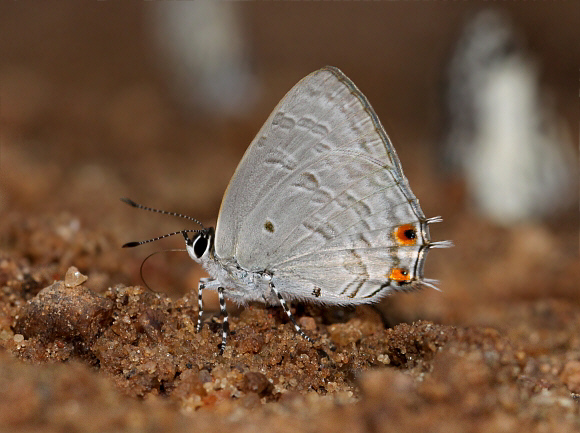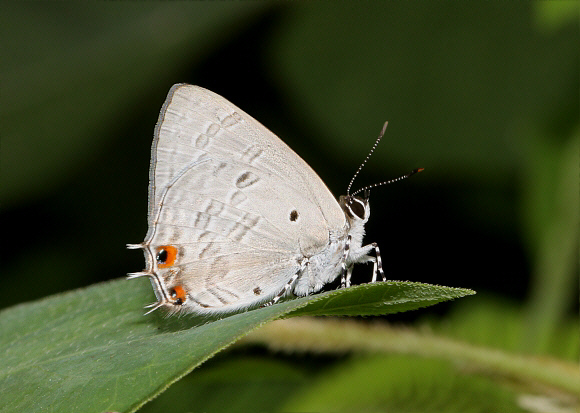
Introduction
The genus Anthene comprises of about 132 species. It includes the subgenera Neurellipes, Triclema, and Neurypexina, although some workers treat these as distinct genera. The genus is centred on the Afrotropical region where there are 123 species. There are also 8 species found in south-east Asia and 1 species which is endemic to Australia.
All Anthene species have three short tails on the hindwing. The uppersides of most species are dark brown, with the males having an indigo or violet sheen. In some species however both sexes have bright metallic orange uppersides with dark brown borders. The undersides are quite variable, e.g. rubricinctus is plain brown with light markings, lachares has a contrasty irregular zebra-like pattern of dark brown and white, larydas is marbled in shades of brown and white, and liodes is white with faint maculae. One characteristic shared by all species however is the group of 2 or 3 tornal spots. These are black, studded with blue scales, and almost enclosed by an orange crescent.
Anthene liodes is distributed from Senegal to Angola, Malawi and Zimbabwe.
Habitats
This species is found in open areas of woodland, forest-edge habitats and dense savannah.
Lifecycle
The larval foodplants include Mangifera (Anacardiaceae), Combretum (Combretaceae), Myrica (Myricaceae), and Schmidelia and Allophylus (Sapindaceae).
Adult behaviour
The adults are usually seen singly. Males perch on low foliage to await passing females. Both sexes nectar at the flowers of herbaceous plants, and males also imbibe moisture from damp ground.

